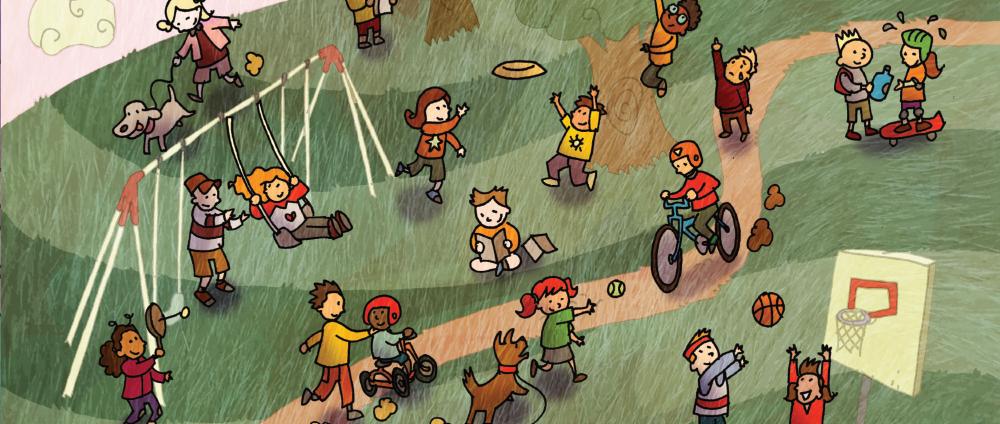
Jesus and a Thankful Man
- Sense that the good things in our lives are gifts from God.
- Express thanks to Jesus for specific gifts.
Leader Reflection
This is a story that can be peeled back in layers, each one with a different slant.
Notice first that Jesus is again on the "border." It was characteristic of Jesus to be a border dweller, on the dividing line between Jew and Samaritan, "good people" and sinners, sick and the healthy, clean and unclean.
Then we note that ten men with leprosy appeal to Jesus for help. As many Bibles note, it was not necessarily leprosy but could have been almost any kind of skin disease. The Law of Moses stipulated that skin conditions rendered a person ritually unclean, and anyone who contacted them would become ritually unclean as well. Ritual uncleanness meant that the person was thrust out of their religious community. Usually such people formed their own small community of fellow unclean people, like these ten men.
Because the men were unclean, they kept their distance from Jesus, shouting at him to have mercy from afar. (In fact, we learn in Mark 1:41 that Jesus did touch a man with leprosy.) But in this case, Jesus merely told them to go to the priest. This was so that the priest could certify that they were clean and therefore fit to rejoin society.
It must have taken some faith for the men to do that, because the healing didn't take place until they were on their way to the priest. At some point along the way, they saw that they were healed, and they went on to see the priest, who gave them a clean bill of health. How glad they must have been to rejoin friends and family after years of being ostracized!
But one man turned right around to go back and thank Jesus as soon as he noticed that he was healed, before even going to the priest. He threw himself adoringly at Jesus' feet, overwhelmed with gratitude. And then Luke unloads the kicker: this man was a Samaritan.
Samaritans were mixed-breed people, Jews who remained after the Assyrian conquest of the Northern Kingdom of Israel and the people who had been forced to relocate there from who knows where. They practiced a mixed religion, importing elements of their pagan practices with Jewish religion. The Jews despised them.
But this Samaritan is the one who comes back to thank Jesus so profusely. Jesus wonders out loud, "Where are the others?" Remarkably, this foreigner is the only one whose heart is filled with gratitude, the only one to acknowledge that Jesus is the source of their healing.
"Rise and go; your faith has made you well." This was more than a faith healing. The man was already healed before he ever returned to Jesus. The word translated as "well" means whole, full, complete. While all ten were physically healed, only this man, expressing his overwhelming gratitude, was truly transformed. He was healed body and soul.
Gratitude is deeply important. When we are grateful, we know that our lives depend on the generosity and goodwill of others. And when we are truly grateful to God, we understand that we depend on him for everything we are and have.
Grace is like an electrical circuit. God gives it freely, but it's only when the grace, the healing, the forgiveness, is returned in grateful living, that it truly transforms our lives.
Steps
Step 1 Breathe
Use this time to focus your attention on God.
Do this with me: calm your head, heart, and hands as you slowly breathe in . . . and out. (Demonstrate a few deep "in and out breaths" with eyes closed.)

Get Unlimited Access!
Sign up for DWELL Digital to unlock all online leader resources, printable pages and session plans.
Call 800-333-8300 or Request Access
Already a subscriber? Log In
Learn About DWELL
DWELL helps kids find their place in God's Big Story. Learn more about this popular and trusted children’s ministry curriculum.
